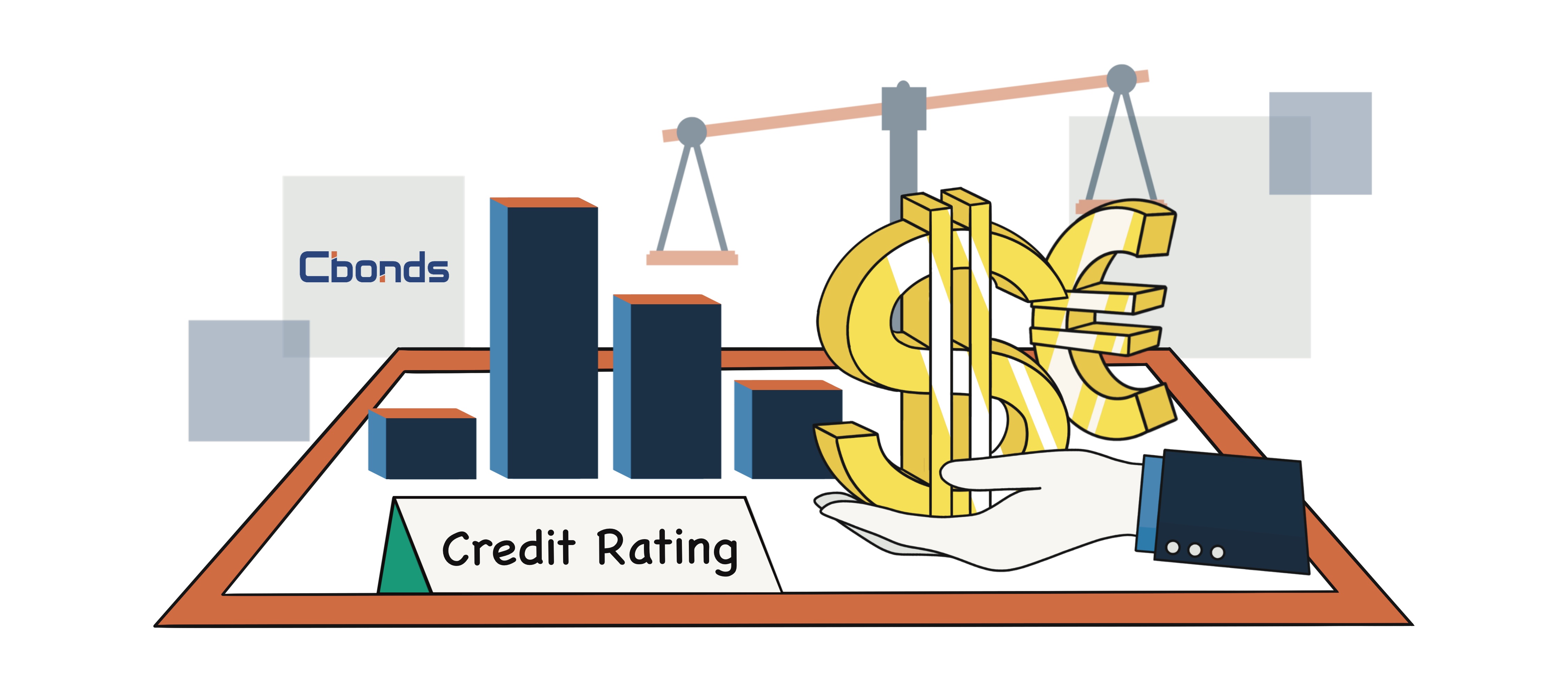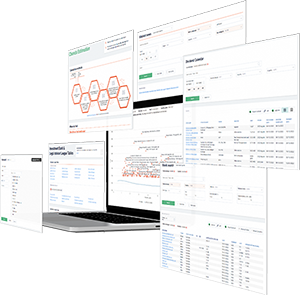By
Konstantin Vasilev Member of the Board of Directors of Cbonds, Ph.D. in Economics
Updated February 14, 2024
What is a Credit Rating?
A credit rating serves as an independent evaluation of the creditworthiness of a prospective debtor, whether it be an individual, a business entity, or a government institution. It acts as an indicator of the entity’s ability to fulfill its financial obligations promptly and completely. This evaluation is typically conducted by credit rating agencies, such as S&P Global, Moody’s Investors Service, and Fitch Ratings, who analyze both qualitative and quantitative information provided by the debtor, along with other non-public data gathered by their analysts.
Furthermore, credit ratings play a crucial role in the financial markets, influencing the interest rates that debt issuers must pay and providing guidance to investors seeking to assess the risk associated with investing in a particular entity or financial instrument. These ratings are not static but can change over time based on various factors, including the entity’s payment history, current debt levels, market conditions, and other relevant considerations.

How Do Credit Ratings Work?
Credit ratings work by assessing the credit risk associated with a debtor, providing insights into the likelihood of timely repayment and the potential for default. This evaluation is based on a thorough analysis of various factors, including the entity’s financial health, payment history, debt levels, cash flows, and overall economic outlook. Credit rating agencies utilize their unique methodologies and scoring models to assign a rating to the debtor, typically represented as a letter grade on a predefined scale. For instance, ratings from AAA to BBB are considered investment grade, indicating a relatively low credit risk, while ratings below BBB are considered speculative grade or non-investment grade, suggesting a higher risk of default.
These credit ratings are essential for both borrowers and lenders in the financial markets. A high credit rating can enable a debtor to access capital at favorable interest rates, while a low rating may result in higher borrowing costs or difficulty in obtaining financing. Investors rely on credit ratings to evaluate the creditworthiness of debt instruments and make informed decisions about their investment portfolios.
The Role of Credit Ratings
Credit ratings play a crucial role in the functioning of financial markets by providing investors, lenders, and issuers with valuable information to assess credit risk and make informed decisions. For investors, credit ratings serve as a benchmark for evaluating the creditworthiness of debt securities, such as bonds and loans, allowing them to gauge the likelihood of timely repayment and the level of risk associated with an investment. Higher credit ratings indicate lower credit risk, leading to lower borrowing costs for issuers and potentially higher returns for investors. Lower credit ratings signal higher credit risk, which may result in higher borrowing costs and increased scrutiny from investors.
Credit ratings also influence the cost of capital and access to financing for issuers, including governments, corporations, and financial institutions. Entities with higher credit ratings can access capital at lower interest rates, reducing their borrowing costs and improving their financial flexibility. In contrast, entities with lower credit ratings may face higher borrowing costs and limited access to capital markets, constraining their ability to raise funds for investments or operations.
Types of Credit Ratings
-
Sovereign Credit Ratings. These ratings evaluate the creditworthiness of national governments and their ability to meet financial obligations. Sovereign credit ratings impact a country’s borrowing costs, foreign investment, and overall economic stability.
-
Corporate Credit Ratings. Corporate credit ratings assess the creditworthiness of businesses and corporations, indicating the likelihood of timely repayment of debt obligations. These ratings influence corporate borrowing costs, investor confidence, and access to capital markets.
-
Municipal Credit Ratings. Municipal credit ratings evaluate the credit risk of local governments, municipalities, and other public entities issuing debt securities. These ratings help investors assess the financial health of municipal bonds and make informed investment decisions.
-
Structured Finance Ratings. Structured finance ratings assess the credit risk of complex financial instruments, such as asset-backed securities (ABS), mortgage-backed securities (MBS), and collateralized debt obligations (CDOs). These ratings evaluate the underlying assets and structural features of the securities to determine creditworthiness.
-
Financial Institution Ratings. Ratings assigned to banks, insurance companies, and other financial institutions assess their stability, liquidity, and ability to meet financial obligations. These ratings are crucial for depositors, investors, and regulatory authorities in assessing systemic risk and ensuring financial stability.
-
Project Finance Ratings. Project finance ratings evaluate the creditworthiness of infrastructure projects, energy projects, and other large-scale ventures funded through project financing. These ratings assess the project’s revenue streams, cash flow projections, and risk factors to determine credit risk.
The Major Credit Rating Agencies
The global credit rating industry is dominated by three major credit rating agencies, commonly referred to as Nationally Recognized Statistical Rating Organizations (NRSROs), each playing a pivotal role in assessing credit risk and providing credit ratings to entities worldwide.
Moody’s Investors Service
Founded by John Moody in 1900, Moody’s Investors Service is renowned for its comprehensive credit analysis and rating methodologies. With a global presence spanning over 40 offices worldwide, Moody’s provides credit ratings and research on corporations, governments, and financial institutions across various sectors and regions. Moody’s ratings are widely recognized for their reliability and influence in the global financial markets.
Standard & Poor’s Global Ratings (S&P Global)
Originating from the merger of Poor’s Publishing and Standard Statistics Bureau in 1941, S&P Global is a leading provider of credit ratings, research, and analytics. S&P Global offers a diverse range of credit ratings covering sovereigns, corporates, municipalities, and structured finance products. Its credit ratings are highly regarded by investors, issuers, and regulatory authorities for their robustness and transparency.
Fitch Ratings
Established by John Knowles Fitch in 1913, Fitch Ratings has evolved into a prominent credit rating agency known for its rigorous analytical approach and forward-looking opinions. Fitch Ratings operates a global network of analysts across 36 offices worldwide, delivering credit ratings and research across various sectors, including banking, insurance, and structured finance. Fitch’s ratings are esteemed for their depth of analysis and timely insights into credit risk.
Differentiating Credit Ratings and Credit Scores
Credit ratings and credit scores are both vital tools used to evaluate creditworthiness, but they serve different purposes and target different entities.
Credit ratings primarily assess the credit risk of businesses, governments, and other institutions, providing an independent evaluation of their ability to meet financial obligations. These ratings are typically assigned by bond rating agencies such as Moody’s, S&P Global, and Fitch Ratings and are expressed as letter grades on a predefined scale.
Credit scores focus on individual consumers’ creditworthiness and are used by lenders to assess the risk of extending credit. Credit scores are generated by credit bureaus based on an individual’s credit history, payment behavior, outstanding debts, and other factors, and are represented as numeric values ranging from 300 to 850. A good credit score is essential for any borrower seeking favorable interest rate on a loan or a bond, reflecting their ability to manage financial obligations responsibly and mitigate default risk.
While credit ratings and credit scores both measure credit risk, they differ in terms of scope, methodology, and target audience. Credit ratings are broader in scope, evaluating the creditworthiness of entities ranging from governments and corporations to municipalities and structured finance products. They rely on comprehensive financial analysis and industry expertise to assess credit risk and provide insights into potential default risks. On the other hand, credit scores focus specifically on individual consumers and their likelihood of repaying debts, helping lenders make decisions about extending credit, setting interest rates, and determining credit limits.
The Evolution and Significance of Credit Ratings
The evolution of credit ratings traces back to the early 20th century, gaining prominence as financial markets expanded and the need for standardized credit assessments grew. Credit ratings became particularly influential after regulatory measures were implemented to mitigate risks in the aftermath of financial crises, such as the regulations issued by federal banking regulators in 1936 to restrict investments in speculative bonds. Over time, credit rating agencies like Moody’s, S&P Global, and Fitch Ratings refined their methodologies and expanded their coverage to include a wide range of entities, from sovereign governments to corporate issuers and structured finance products. As financial markets became increasingly interconnected and complex, credit ratings played a crucial role in facilitating capital allocation, enabling investors to assess credit risk and make informed investment decisions.
The significance of credit ratings extends beyond the world of finance, impacting economies, businesses, and individuals worldwide. Sovereign credit ratings influence government borrowing costs, foreign investment inflows, and overall economic stability, shaping fiscal policies and investment strategies. Corporate credit ratings impact companies’ access to capital, cost of borrowing, and investor confidence, influencing corporate strategies and financial performance. Credit ratings provide transparency and standardization in the evaluation of credit risk, enhancing market efficiency and investor protection. Despite occasional criticisms and challenges, credit ratings remain essential tools in the global financial system, serving as trusted indicators of creditworthiness and supporting the functioning of capital markets.
Bond Screener
Watchlist
Excel Add-in
API





















